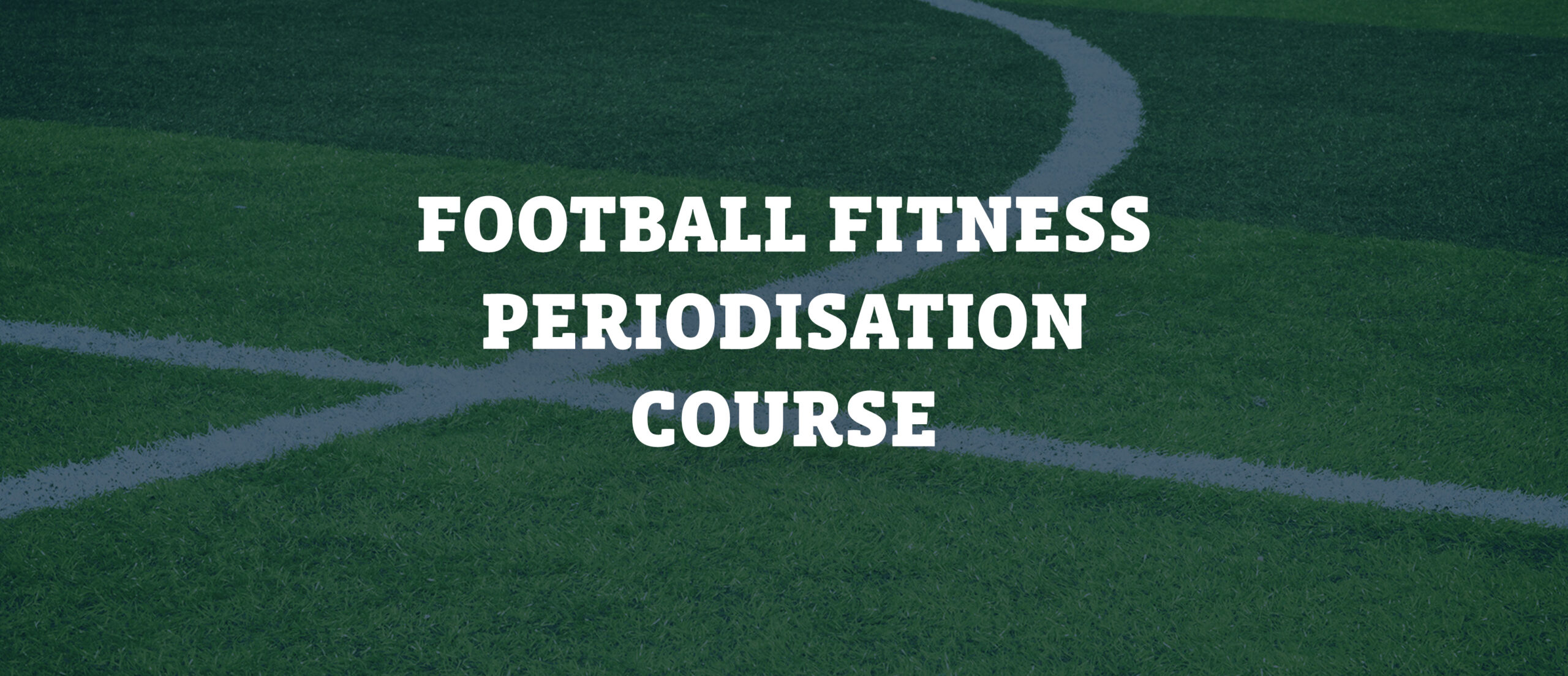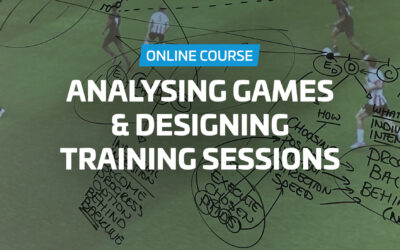Course description
To be able to periodise football fitness, one should first understand what football fitness is. And to understand what football fitness is, one should first understand what football is as football fitness is a specification of football. Therefore, in this course, we will work from ‘football’ to ‘football fitness’ to ‘the periodisation of football fitness’. It will be proven that players need fitness IN football rather than fitness FOR football. In other words, football fitness only exists in the football context. Football fitness means interacting with the football surrounding, more frequently and for longer. And from the start, it will be made very clear that the brain is a body part and, therefore, an integral part of football fitness.
Specific pre-season periodisation references and principles will be introduced based on which coaches can develop top fit players while maintaining maximum freshness and without injuries after the players have returned from the off-season. Avoiding injuries means more training sessions with all players and, subsequently, better communication between players in the first league game. All objective references and principles will be explained and translated to the context of professional, amateur and youth football. With each principle, it will be demonstrated how to apply this within the team periodisation of the respective contexts.
Scientific studies will be used to explain football fitness periodisation in general and the periodisation of specific areas in particular. For example, the best possible training exercises will be introduced based on the results of a study on football actions in games 11v11 to 1v1 and with the help of several training session clips. Also, a longitudinal study between 1997 and 2016 in the Dutch academy system will be used to prove how younger players born in the second half of the year are over-overloaded in training. Disturbing results will be shared how their growth pattern is disturbed resulting in smaller people in the long term.
Real-life case studies will be used to demonstrate the subjective application of the different objective references and principles. The periodisation of a chaotic season of a team reaching the Europa League Final 2017 will be used to illustrate how some of the most complex situations were anticipated. In the context of youth football, a real-life case study about the youth academy that produced more World Cup players than any other academy in recent years, will be used to demonstrate how the objective references and principles can be used to purposefully accelerate the football development of children before, during and after the growth spurt. The main message will be that an anticipation on external factors will be a subjective process by definition but it is the responsibility of the coach to base this subjective application on as objective and as logical reasoning as possible.
Course procedure
This online course contains ten 2,5-hour courses. All courses are immediately available for a period of 2 months starting on the day of registration so coaches can study the material at their own convenience and in their own tempo.
Certification
After successfully completing the course, delegates will receive an official FCE certificate.
Learning outcomes
This is what you will get out of the ten 2,5-hour courses:
Step 1: What is football fitness?
A deeper understanding of what football, football fitness and the periodisation of football fitness is. Coaches will learn that players need fitness IN football rather than fitness FOR football. In other words, football fitness only exists in the football context. Football fitness means interacting with the football surrounding, more frequently and for longer. The three football fitness characteristics will be discussed in detail.
Step 2: The role of the brain within football fitness.
You will learn that the brain is a body part and, therefore, an integral part of football fitness. Fluctuations in the brain state will cause fluctuations in football fitness. Therefore, four football thinking characteristics will be introduced as an integral part of the one football ability and three football fitness characteristics. Also, the role of the brain will be discussed when overloading football. It will be proven that the brain is the decisive body part that makes the difference between overload and underload.
Step 3: Football fitness exercises and periodisation model.
Based on the results of a study on games 11v11 to 1v1 and with the help of training session clips, it will be proven which football exercises are best to overload the respective football fitness characteristics. Coaches will understand the rationale behind the football fitness periodisation model and what the advantages are of a 6-week cycle compared to, for example, a 3-week model. The football fitness periodisation model will not only be explained but also immediately applied in the team periodisation for professional, amateur and youth football.
Step 4: Football fitness training methods.
Coaches will learn where the line is between overload and over-overload and subsequent injuries. A training method will be introduced and explained for each of the football fitness exercises. The rationale behind the work-rest ratios, the number of repetitions and series as well as the progressions, will be extensively explained.
Step 5: How to develop a team periodisation.
Coaches will learn how to plan the training sessions before and after the football fitness session. The periodisation of warming-ups, passing exercises, shooting exercises, position games, tactical games will be explained in the context of professional, amateur and youth football. It will be shown how the above training components will help to balance the training load when training almost every day, three times per week and two times per week.
Step 6: Pre-season periodisation.
Coaches will learn how to optimize the practice game planning to maximise the training effect of each training session. Also, specific pre-season periodisation principles will be introduced based on which professional, amateur and youth coaches can develop a top fit team with maximum freshness and without injuries after the players have returned from the off-season. Avoiding injuries means more training sessions with all your players and, subsequently, better communication between players in the first league game.
Step 7: Off-season periodisation.
Coaches will learn how to develop an individual program that overlaps with the pre-season periodisation as much as possible. The only difference will be the fact that during the off-season players will perform ‘basic actions’ rather than ‘football actions’ as the interaction with the football surrounding is not possible. We will develop an individual training program for professional, amateur and youth players that is similar to the pre-season periodisation developed in step 6.
Step 8. The Ajax case study.
Coaches will learn that a team periodisation is only the planning of the ideal world based on principles for top fitness, maximum freshness and no injuries. However, when applying this team periodisation, the ideal world will interact with reality. As every real-life situation is different, coaches will learn how to anticipate external factors. This so-called subjective application of objective periodisation principles is also called ‘the art of coaching’. Coaches will learn from a case study of the periodisation of a chaotic season of a team playing many mid-week games in Europe reaching the Europa League Final 2017. It will be demonstrated how some of the most complex situations were anticipated. In particular, the periodisation for substitute players will be covered as well as the periodisation of tactical training sessions.
Step 9. Youth academy periodisation.
Coaches will learn that in professional and amateur football, the principles of football fitness periodisation are tools to optimize the performance of players. However, in youth football, these principles will also be used to purposefully accelerate the football development of children before, during and after the growth spurt. Coaches will develop a deeper understanding how to plan a training week and in particular the planning of tactical training, game insight training, technique training and football fitness training. Also, the so-called ’10.000 hour-rule’ will be put in perspective. Coaches will learn from a real-life case study about the youth academy that produced more World Cup players than any other academy in the world in recent years.
Step 10. Periodisation means anticipation.
Coaches will receive many tools to anticipate all the different external factors in daily life. How to anticipate too many or not enough players to apply what is planned? How to deal with bad weather or an early injury crisis? These are just some of the many scenarios that will be discussed in this tenth step. The main message will be that an anticipation on external factors will be a subjective process by definition but it is the responsibility of the coach to base this subjective application on as objective and as logical reasoning as possible. There will be special attention for individual periodisation within the team periodisation to tailor the football load for individual players in an attempt to reduce the negative effect of certain external factors.
Course Features
- Lectures 30
- Quiz 0
- Duration 9 weeks
- Skill level All levels
- Students 409
- Certificate Yes
- Assessments Yes
Curriculum
- 10 Sections
- 30 Lessons
- 9 Weeks
- Step 12
- Step 22
- Step 33
- Step 44
- Step 53
- Step 65
- Step 72
- Step 83
- Step 93
- Step 103





